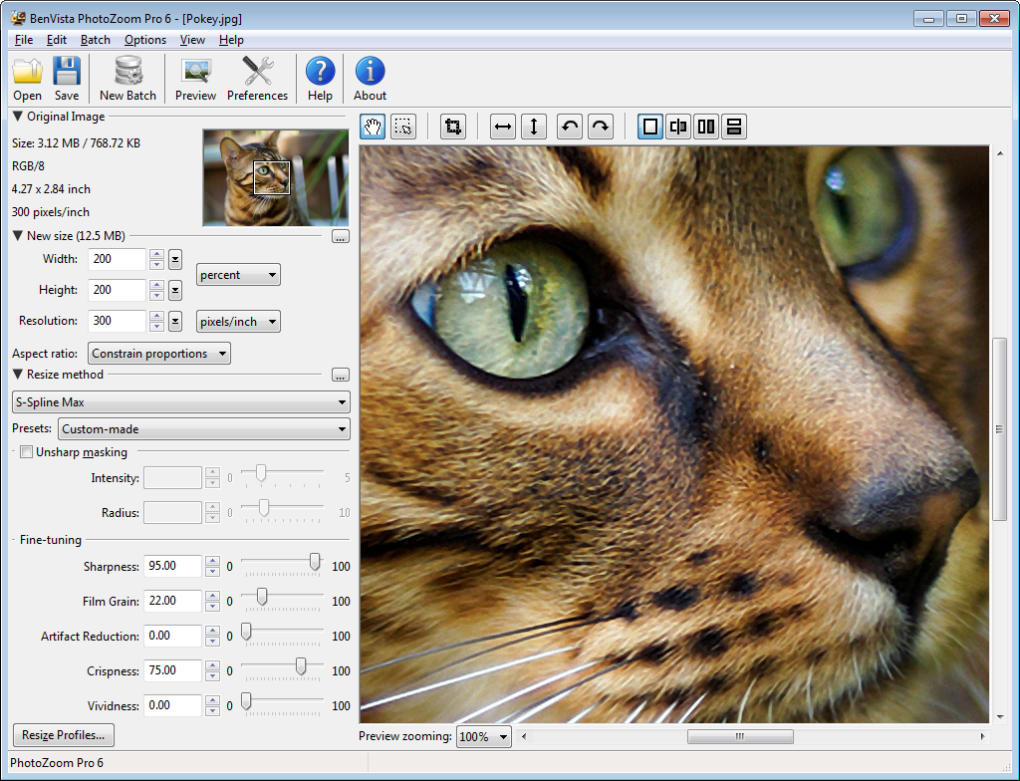
The following example includes regions of fine detail, sharp edges and a smooth background:Īll but nearest neighbor (which simply enlarges the pixels) do a remarkable job considering the relatively small size of the original. These also have to deal with color patterns, image noise, fine textures and edges that are not as easily identifiable. The above comparisons demonstrate enlargement of theoretical examples, however real-world images are seldom this simple. The only interpolator which maintains both smooth sharp edges and the flag's tip is SmartEdge.

It is also worth noting though that Genuine Fractals does the best job at preserving the tip of the flag, whereas PhotoZoom sometimes breaks it up into pieces.

Genuine fractals adds small-scale texture which was not present in the original, and its results for this example are arguably not much better than those of bicubic. Note how PhotoZoom produces superior results in the computer graphic above, as it is able to create a sharp and smooth-flowing edge for all the curves in the flag. PhotoZoom has several settings - each geared towards a different type of image. It uses a spline algorithm to re-create these edges, which is similarly used by car manufacturers when they design a new smooth-flowing body for their cars. It takes into account many surrounding pixels when interpolating each pixel, and attempts to re-create a smooth edge that passes through all known pixels.
#Photozoom classic 5 vsphotozoom standard 6 pro
Shortcut PhotoZoom Pro (formerly S-Spline Pro) is another common enlargement program. Times have changed since storage space is now more plentiful and fortunately, so has its application. Interestingly, its original aim was not for enlargement at all, but was instead intended for efficient image compression. It tries to encode a photo similar to a vector graphics file - allowing for near lossless resizing ability (at least in theory). Genuine Fractals is perhaps the most common iterative (or fractal) enlargement software. *default interpolation algorithm for Adobe Photoshop CS and CS2 **still in research phase, not available to public Unfortunately, these often require more processing time and are usually more expensive.Įven the most basic non-adaptive methods do quite well at preserving smooth tonal gradations, but they all begin to show their limitations when they try to interpolate near a sharp edge.

This flexibility gives much sharper images with fewer artifacts (than would be possible with a non-adaptive method). Recall that adaptive (edge-detecting) algorithms do not treat all pixels equally, but instead adapt depending on nearby image content. Nearest neighbor and bilinear are not computationally intensive, and can thus be used for things like web zooming or handheld devices. Lanczos and bicubic are some of the most common, perhaps because they are very mild in their choice of all three artifacts (as evidenced by being towards the middle of the triangle above). All show some degree of aliasing, however one could always eliminate aliasing entirely by blurring the image in Photoshop (#7). Lanczos is very similar to Photoshop bicubic and bicubic sharper, except perhaps a bit more aliased.

You will see that edge sharpness gradually increases from 3-5, but at the expense of both increased aliasing and edge halos. Nearest neighbor is the most aliased, and along with bilinear these are the only two that have no halo artifacts - just a different balance of aliasing and blur. The qualitative diagram to the right roughly demonstrates the trade-offs of each type.


 0 kommentar(er)
0 kommentar(er)
